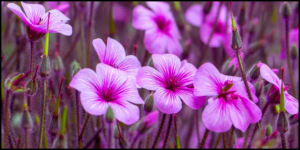
Cottage gardeners love Stock Flower because they’re easy to grow and offer big returns both as fresh-cut blooms or dried blooms. Grow in full sun (tolerating light shade), in moist but well-draining soil with moisture retention. They thrive when planted among other flowers with similar needs such as Alyssum, Dianthus Larkspur, or Snapdragons.
Comprehensive Guide to Growing and Caring for Beautiful Stocks
Stocks make an elegant addition to flower borders and act as gap fillers between other more vigorous blooming plants. Perfect for sunny or partially shaded areas of the garden, containers, or terraces, and also popular as cut flowers, stocks are sure to bring a pop of color wherever they’re planted! As the season advances, stocks produce an abundance of blooms on sturdy stems. If you wish to cultivate stocks for cutting purposes, select those with long stems and trim straight across at their base.
This will guarantee the freshest flowers for floral arrangements! Regular watering and feeding once every month should be enough to keep stock healthy and productive, although protecting from grey mold (Botrytis sp) should also be done as soon as it appears on flowers or fruit to prevent Botrytis sp from attacking flowers and fruit directly. Pruning off any affected flowers or leaves as soon as they appear can help, while watering the plants at the soil level rather than spraying fungicide will be an effective way of combatting it.
Stock Flower of this variety typically feature single or semi-double blooms with pastel or bright tones, depending on your climate. As long as conditions permit it, these plants should bloom from spring through summer – with perhaps some interruption during hotter spells of weather. They can also be grown as biennials in warm areas or half-hardy annuals in colder regions; certain varieties such as “Legacy” are even able to tolerate light frost conditions!
Seeds should be planted indoors six to eight weeks before the last frost or directly outdoors once all danger of frost has passed, either through direct sowing or indoor/outdoor planting. They need to be kept evenly moist but not wet – seeds prefer cooler conditions and won’t thrive in hot, overly wet soil.
Mastering Stock Flowers: Sowing, Growing, and Nurturing Beautiful Blooms
Stock Flower is a cool-season annual flower that typically blooms from early summer through fall, depending on its variety. In mild climates it can even become half-hardy perennial or short-lived biennial depending on where and when you choose to plant seeds. Proper seed sowing timing is crucial in order to grow successful plants.
For optimal results, sow stock seed in early summer before the last frost. When sowing stock seed, sow it in rich neutral soil with just an 1/8 inch covering and lightly water each day until seed germination occurs – usually 10 days later. After seedlings have established themselves you can harden off and transplant outdoors.
Once your stock flowers have been successfully planted, they will quickly flourish into mature plants that produce plentiful blooms suitable for fresh arrangements. Keep in mind, however, that when exposed to high temperatures they will quickly wilt so remember to water frequently for at least the first several weeks post planting.
After the initial growth period is complete, gradually reduce watering and fertilizing to lengthen blooming season. But remember: using too many fertilizers or chemicals increases the chances of Fusarium wilt and gray mold; to keep your garden soil as free from chemicals as possible will be more likely to prevent these problems than any chemical treatment of any sort!
Stock Flower (Matthiola incana) symbolize affection and overflowing love in Victorian parlance, with lush petals and clusters of blooms reflecting this sentiment beautifully. When grown in your garden, these beautiful blooms will not only bring beauty but will also attract pollinating bees, butterflies, moths, which pollinate other herbs and vegetables, helping them flourish further.
The Sweet Scented Beauty of Matthiola: Tips and Tricks for Cultivating Fragrant Stocks
Sweet-scented blooms of this hardy plant (Matthiola) bloom from spring through summer and make a welcome sight in cottage gardens. Their sturdy nature also means they thrive well in containers, terraces or flower beds as gap fillers. Their name comes from their lavish profusion of fragrant blossoms in pastel to vivid colors which fill any arrangement and bouquet perfectly – they make great additions. It is relatively quick to flower once established from seed in cooler climates as well
Due to their brassica nature and frost-proneness, planting seeds for these veggies either inside in early spring or after the last frost of the spring should be completed. You could also purchase nursery starts and transplant them directly into your garden or flower containers; or sow seeds outdoors and you could see your first harvest as early as late summer!
If you’re cultivating stock in containers, start by mixing organic compost into the soil prior to planting. And continue adding additional organic matter throughout the growing season. After watering thoroughly but without oversaturation of soil conditions, keep temperatures cool but consistent and use general-purpose liquid fertilizer when planting as well as time-release fertilizer prior to cutting for best results. It is also vital that deadheading be done when blooms begin wilting to promote more blooming while maintaining neat appearances.
For optimal results when arranging stock flowers, select tall stems of similar length. Next, make sure your vase can accommodate three or four buds at the same time. And use shears or clippers to cut stems at an angle. Remove any leaves that would rest beneath the waterline of your vase. And change out its water daily for maximum freshness.
Stock (Matthiola incana): Aromatic Beauty and Symbolism of Everlasting Bloom
Stock Flower (Matthiola incana), more commonly known as gilly flower and hoary stock. Brings vibrant blooms and an aromatic, spicy fragrance to garden beds, cottage gardens and cut arrangements. As a hardy biennial treated like an annual, its long-lived flowers add splashes of color. As well as long-term fresh cut arrangements with lasting blooms of white pastel pink pastel colors. Through red rose and purple shades that range from white pastel pink pastel pink red rose and purple shades. Ideal for garlands corsages and centerpieces.
Though native to Southern Europe, stock has become an immensely popular garden flower. Around the world due to its cool color and unique scent. These gorgeous blooms boast frilly petals forming a frilly spire at their center surrounded by soft narrow green leaves. They come in sizes between 12-3 feet tall. In colder areas stock should be planted as winter/early spring blooming flowers. It also works well for mild coastal and mountain climates.
Modern Varieties of Stocks: Effortless Elegance and Symbolism
These modern varieties of this classic herbaceous perennial feature hybrid flowers in multiple pastel. And vivid hues that make an easy addition to most gardens. Their easy care requirements and drought resistance mean they require little fertilizer. Or other form of feeding; however a thick layer of natural mulch will help reduce weed growth. While keeping soil evenly moist for optimal growing conditions. Deadheading faded blooms keeps plants looking neat. When possibly encouraging them to rebloom later.
Stocks were a favorite choice during the Victorian era for bouquets and corsages. Though its meaning has evolved slightly over time, stocks still symbolize everlasting beauty and faithfulness. As well as happiness and contentment in life. Civil War soldiers often carried bouquets of stock flowers as a sign of patriotism. While Virginia President Thomas Jefferson planted many at his Monticello gardens during this era.


